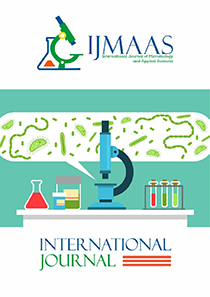Botanical Control of Some Fungal Rot Disease Causing Spoilage of Sweet Potato (Ipeomea batata) Tubers in Three Markets in Aba, Nigeria
Vol 3, Issue 1, 2024
KEYWORDS
Sweet potatoes, rot fungi, pathogenicity, Neem, Uziza, antifungal, food security.
Abstract
Production of sweet potato in Nigeria can be improved by increasing productivity and avoiding crop failures caused by storage rots. Pure fungal isolates were assessed for potency in causing tuber rot of sweet potato (Ipeomea batata) during storage using standard microbiological procedures. The isolates were Aspergillus flavus, Aspergillus fumigates, Aspergillus niger, Fusarium oxysporum, Penicillium chrysogenum, and Rhizopus stolonifera. Each fungus was inoculated into eighteen healthy potato tubers purchased from Afule market, Umungasi market and new market in Aba, Abia State and were left for 10 days after which extent of rot was determined by depth of rot caused. Control was evaluated using aqueous leaf extracts of Azadirachta indica (Neem) and Piper guineense (Uziza) against the fungi associated with spoilage of stored potato tubers. The fungitoxic effect of the plant extracts was determined by diameter of zone of inhibition (mm) at four concentrations of 100 mg/ml, 75mg/ml, 50 mg/ml and 25 mg/ml. The zone of inhibition for neem extract and that of Uziza ranged from 7.00-24.07 mm and from 14.03-18.17mm respectively. Zone of inhibition was significantly different at (p<0.05) for both plant extracts at the concentrations used. Extract of neem also showed significantly higher zones of inhibition than extract of uziza at all concentrations used. The highest zone of inhibition (24.07 mm) was observed against R. stolonifer while the lowest (6.33 mm) was against A. niger, A. fumigatus and F. oxysporum. Pathogenicity test of fungal isolates on healthy potato tubers revealed that A. fumigatus recorded highest diameter of rot (15.08 mm) while Aspergillus niger recorded the lowest (7.55 mm). The antifungal activities demonstrated by the plant extracts against the sweet potato rot fungi can be useful to identify phytochemicals in plant extracts that would act as fungicides in the control of potato rot fungi, hence, improve food security.
Current: Vol. 4, Issue 1, 2025

Call for papers
The International Journal of Microbiology and Applied Sciences warmly welcome your valuable articles for publication.
